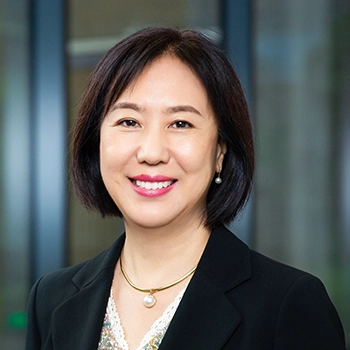Streets were empty in Wuhan, China. Transportation was suspended, travel restricted and social contacts reduced to a minimum. Hospitals postponed surgeries and limited routine care. While the world’s attention was focused on those infected with COVID-19 in the city earlier this year, other patients struggled to get the treatment they needed.

Scenes from Wuhan reminded Yan Zhao of a different disease outbreak, one that occurred 17 years ago. In 2003, severe acute respiratory syndrome (SARS) generated similar challenges. In some cases, patients enrolled in clinical trials for other diseases were sidelined. And Zhao’s first thought during the emerging crisis was, “We have studies in the city. We have to look out for patients enrolled in those studies”.
Zhao, who is Head of Global Drug Development (GDD) for Novartis in China, oversees the company’s development organization and its studies in the country, including clinical trials in Wuhan. One of the hospitals in the city is a clinical site for a number of Novartis trials and, due to the pandemic, had exhausted its capacities. Zhao rapidly formed a cross-functional emergency team that uses innovative services and technologies to help patients get their investigational medicines and safety assessments on time.
Zhao spoke to us about what the lockdown meant for patients and how her team went the extra mile to help them.
There were people with different expertise pitching in and working until very late at night to find a hospital that was willing to help us. Everybody put patients – and their safety – first. That really impressed me.
Yan Zhao
What did the situation mean for patients participating in clinical studies?
During the lockdown people were not allowed to enter or leave the city. In addition, hospitals inside the city were limiting care for patients with diseases other than COVID-19 to reduce exposure to the new coronavirus and focus resources. This meant that we had to find alternative solutions for patients enrolled in our trials. Some of them were living inside the city. Others were accustomed to traveling to Wuhan to get their investigational treatments and safety assessments.
How did you get patients their treatments?
We faced different situations. There were patients who didn’t need to visit a hospital in order to receive their investigational drugs. In this case, we shipped the treatments to the patients’ homes by courier, and safety assessments were carried out by investigators remotely. For those who needed to visit a hospital to get their treatment, we were able to collaborate with a hospital outside of Wuhan that had the capacity to help out. We connected the investigators at the original treatment site in Wuhan with that clinic to provide guidance for the assessment and treatment of the patients. This is really an unprecedented practice. We had never been so excited to hear that patients had received their treatments.
Who helped make this happen?
There were people with different expertise – from the medical, commercial, marketing and market access departments – pitching in and working until very late at night to find a hospital that was willing to help us and connect the two hospitals. Investigators at the original clinical site worked in their spare time to train the doctors in the partner hospital. And the Novartis team that monitors trial operations did a great job coordinating all of the parties. Everybody put patients – and their safety – first. That really impressed me.
What have you learned during this time?
The pandemic taught me a lot. I have learned that, especially in times like these, you are stronger together. Collaboration is key – not just internally, but also with investigators, the hospitals, the government and health authorities. I have learned that it is crucial to have a common goal to address a common challenge. And I have learned that in the end we should not forget to help each other and care for one another.
Main image from Adobe stock: 3D rendering of COVID-19, the novel coronavirus causing the pandemic
